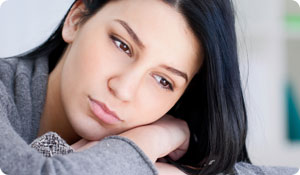
Changes in sunlight trigger SAD (Seasonal Affective Disorder), a type of depressive disorder. Symptoms often appear in the fall and winter but generally disappear in the spring when the days begin to lengthen. About three fourths of SAD sufferers are women, and people with SAD may suffer from other mood disorders as well.
Light therapy is effective for treating SAD and general depression. The exposure to artificial light affects brain chemicals linked to mood and helps regulate our internal clock.
Light Therapy
During light therapy, you must indirectly expose your eyes to artificial lights. Standard light boxes emit 2,500 to 10,000 lux of light. Lux measures the amount of light you receive at a specific distance from the light source. Experts recommend placing the light box about two feet from where you are sitting or working. Start with 15 minutes and work up to at least 30 minutes once daily. At 5,000 lux, the recommended dose is one hour; at 10,000 lux, half an hour should work.
The key to using light therapy is consistency. It's important to use the light at the same the same time each day, generally right after you wake in the morning. Using light therapy later in the day can disrupt your sleep.
Light Boxes
You can purchase a light box over the counter or by prescription. Select a light box specifically designated to treat affective disorders (some light boxes treat skin conditions, such as psoriasis). While white light is the standard, it appears that blue lights are also effective, although they may harm your eyes. LED (light-emitting diodes) lights work as well as fluorescent or incandescent lights. You may see a difference in just a few days, or it may take a few weeks before you notice improvement.
Side Effects
Unfortunately, there are few side effects with light therapy. However, if you experience headache, nausea, eyestrain, irritability, dry mouth, and trouble sleeping, it generally does not last very long.
Check with your physician before beginning light therapy to rule out any co-existing conditions that may interfere, or to prevent complications caused by medications, eye conditions, or if you have a history of skin cancer.
Sources
Light Therapy Products. "Seasonal Affective Disorder." Web. 28 June 2008.





